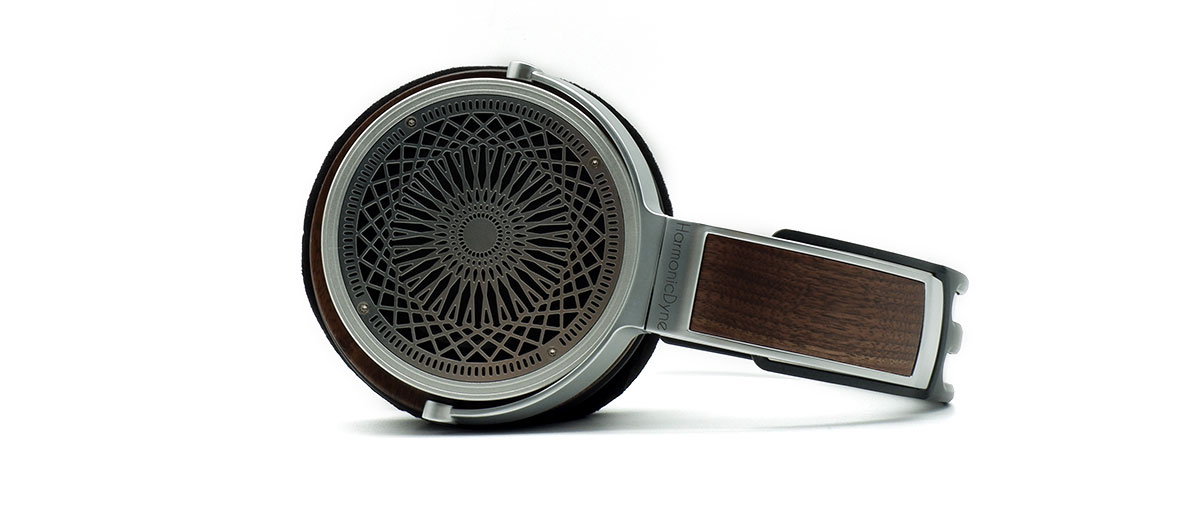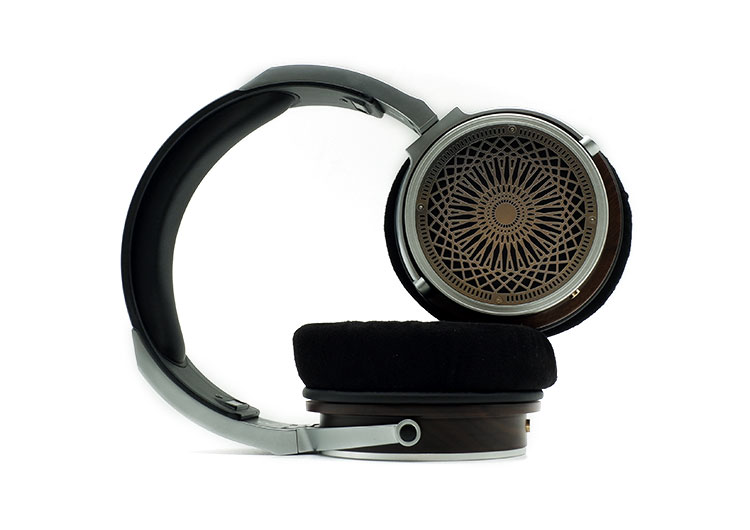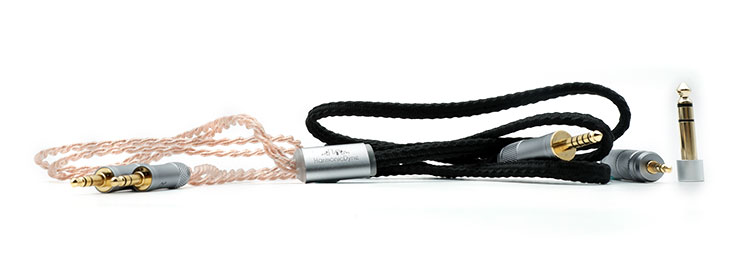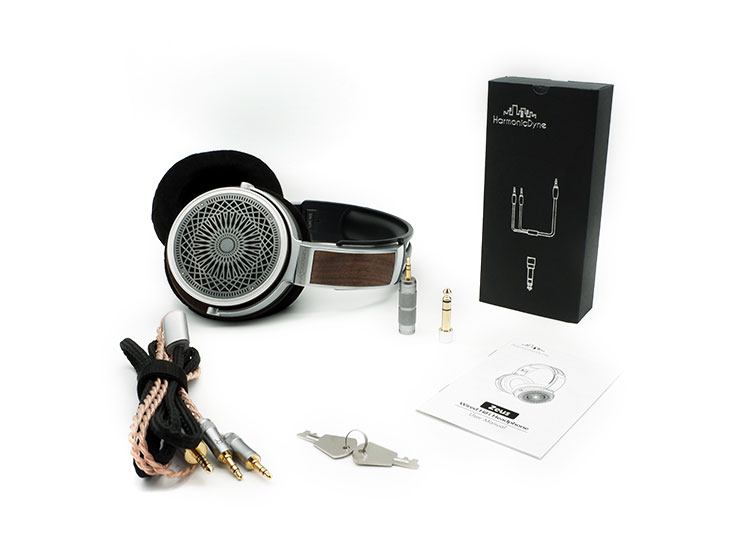The HarmonicDyne Zeus is a circumaural open-back 50mm beryllium dynamic driver set of headphones with a wood finish. It is priced at $350.
Disclaimer: The HarmonicDyne Zeus sent to us is a sample in exchange for our honest opinion in this review. We thank the team at Linsoul for giving us this opportunity.
To read more about Linsoul reviews previously done on Headfonics please click here.
Note, this 2-page review follows our new scoring guidelines for 2020 which you can read up on here.
Linsoul is one of the big online audio retailers currently with a wide selection of headphones, IEMs, amps, DACs, and DAPs. While their products are all available through their website, Linsoul also has listings in Amazon US, UK, and Germany.
With their wide market reach, Linsoul has brought some homegrown brands to their own line including ThieAudio and more recently headphones under the HarmonicDyne brand. They started with their Helios headphone, and have just recently released a higher-end model in the Zeus, which Linsoul has graciously sent to us for evaluation.
Tech Highlights
The most prominent thing on the marketing material on the Zeus says that it’s equipped with a 50mm Beryllium driver. Typically, drivers that have Beryllium are rigid, while remaining relatively light. This allows the driver to move faster with minimal effort from the magnetic circuit, while still maintaining the driver’s shape.
Aside from the driver itself, the Zeus is also equipped with nano velvet cushions with a geometric inner layer. This allows for a comfortable ergonomic fit while creating a tight seal around the ears that will create a tight bassline.
Aside from employing technologies that ensure the quality of the headphone themselves, HarmonicDyne also ensured that they used a high-quality cable. The cable is made of OCC ultra-high purity copper that ensures rich mids and a punchy bassline.
Design
In the pictures, the headphones themselves look like they’re primarily made of plastic. However, when holding them in my hand, they feel more durable than I imagined them to be. The joints and hinges all swivel smoothly while giving me a feeling of confidence that they won’t just fall off.
The wood inserts on the plastic pieces of the headphone are also a nice touch, and they look quite natural. The headband on the other hand has nice adjustment mechanisms that have metal inserts. The adjustment of the headband is smooth while being firm enough so that they won’t need constant adjustment every time the headphone is worn.
The earcups swivel 360° horizontally and vertically, which allows the headphone a free range of motion. However, I find it unnecessary, and at times the articulation options can get distracting especially when the earpads start flopping around when I pick them up from the table.
The side grills are the one thing that I wish were a bit more refined. It seems like it’s a thin sheet of stainless steel that was laser cut to create the patterns on the grills. Unfortunately, the detailing in the grill is a bit too small, so it can’t be blunted. So the sides of the grills feel a bit like a cheese grater, which is, fortunately, not sharp enough to cut into my fingers.
Stock Cable
The terminations on the Zeus are 3.5mm TRS connections, with the same internal connections as most modern Hifiman headphones like the Ananda. So finding an aftermarket cable is going to be easy.
The cable itself comes in 2 parts, the first part is covered in a clear PVC sheath, while the lower portion is covered in a cloth sheath. Separating the 2 parts is a y-split that has a large silver bead with the HarmonicDyne branding. While the pictures make me think that the cable is going to be stiff, I was pleasantly surprised that the cable that the Zeus comes with is very manageable.
The stock termination on the cable is a 4.4mm pentaconn connection, which is a good choice because it’s one of the more common balanced terminations for both DAPs and modern desktop headphone amplifiers.
For those who don’t have anything that takes 4.4mm though, HarmonicDyne has also provided with the Zeus an adaptor to 3.5mm and an adaptor from 3.5mm to ¼”.
These adaptors will allow Zeus to connect to most other devices. However, using adaptors to go from 4.4mm to ¼” makes me worry that the termination might easily snap off due to the extreme length. I wish HermonicDyne just provided a separate connector from 4.4mm to ¼” instead.
Comfort & Isolation
The earpads are made of velvet material, and the foam material is really soft despite not being made of memory foam. The foam surprisingly conforms around my ears to create a tight seal. Inside the earcups, there is ample space to comfortably accommodate my ears without my ears touching the walls of the earpads.
The headband on the other hand has a soft leather pad on top to prevent any hot spots on top of the head. The headband exerts just enough pressure on the sides of my head to ensure that the Zeus won’t fall off my head while remaining comfortable.
Being an open headphone, it’s expected that the Zeus would allow sound to come in. However, the amount of sound that Zeus lets in is a bit less than what I expected it to be. I would say that they isolate about as well as a Sennheiser HD600 but not much more.
Packaging & Accessories
When the HarmonicDyne Zeus arrives, it comes in a large brown box with HarmonicDyne branding. The box is then stuffed with inflated packing plastic together with the much sleeker headphone carrying case that looks like a small suitcase.
Upon opening the carrying case, there is a slight chemical smell, but it goes away once the case has been opened for a few hours. Inside the carrying case are foam inserts that keep the headphone firmly in place during storage and transport. Aside from the headphone themselves, there is a box that has the cables and some adaptors inside, the manuals, and a pair of keys.
Carrying Case
I couldn’t help but discuss the carrying case a bit, since it’s something unique, especially at this price point. The carrying case that comes with the Zeus is not your typical ruggedized carrying case that’s made of plastic. The one that comes with the Zeus looks a little less rugged, and instead, it looks a bit like a suitcase that carries wads of cash.
The case only opens up to 90°, which allows it to double up as a presentation case. Opening it up is always an experience that makes me feel like I’m seeing something special when the case is opened. The case also has keys inside, so that it can be locked up for a bit more security.
This case doesn’t have waterproofing gaskets though, so be wary of bringing it around if you are in a jungle expedition? But generally, the case will suffice for most applications, and it will keep Zeus safe inside at all times.
Sound Impressions
Bass
Being named after the god of thunder, Zeus lives up to the name. The first thing that I noticed when I listened to the Zeus is that it has copious amounts of bass. It actually slightly reminds me of the first high-end headphone I ever bought, the Audioquest Nighthawk.
Sub-bass on the Zeus is generally rolled off when compared to the rest of the bass region. However, the sub-bass is still very much audible. When playing sub-bass notes, the Zeus presents sub-bass notes very clearly, although the sub-bass notes seem to emanate from further out rather than engulfing the entire soundscape.
Compared to the sub-bass, the mid-bass has a more forward presentation. Typically, headphones with a more elevated mid-bass region result in a bit of a mid-bass bleed. Fortunately, the Zeus’ mid-bass region is properly controlled, so it doesn’t bleed into the other frequencies. Coupled with the generous amount of bass presence, Zeus also has a very immediate sense of attack.
Bass on the Zeus is a unique combination of different features that don’t typically converge in just 1 headphone. The bass is slightly elevated but doesn’t bleed into the other frequencies, while it remains very textured to bring the details to the fore.
Finally, it’s very punchy, so it’s enjoyable for bass-heavy tracks. Had the sub-bass been less rolled off, then it would have been absolutely perfect.
Midrange
The midrange is slightly dipped when compared to the bass region, which is typically not what I enjoy. However, I was surprised that the vocal range on the Zeus is enjoyable for me.
Vocalists such as Josh Groban retained that powerful sense of vocal richness despite not having much in terms of harmonic overtones or an exaggerated sense of decay. Female vocals are also appropriately euphonic, while still being presented with an appropriately dry character.
Instrument timbre is on the brighter side, where piano tones take on a very planted and impactful fundamental while having a bit of treble sparkle to give it character.
With successive piano notes though, each note may lack a sense of articulation since they may sometimes get blurred together in faster passages. String instruments like violins and cellos take on a very rich and flowy character while retaining details such as a hollowed sense of timbral character.
Typically, I would prefer a slightly more euphonic midrange presentation. However, I was surprised that Zeus’s slightly drier presentation ended up being quite pleasant because of the appropriate amount of control.
Treble
The bass on the Zeus is of particular note, however, with a heavier bass region, the treble would need to properly balance out the bass to prevent the headphone from being too dark. Fortunately, Zeus does this quite well. With the treble range, the overtones of instruments such as guitars and pianos are properly presented, and give these acoustic instruments a touch of brightness.
Cymbals are presented with a good amount of texture, where each hit is fleshed out. The decay with cymbal hits is more controlled, so it won’t ever end up splashy. Cymbal hits on the Zeus generally take on a controlled and crystalline character. However, there are instances that cymbal hits end up being a bit tinny due to the more controlled nature of the treble.
Although the treble frequencies on the Zeus are not particularly elevated, the articulation, clarity, and speed of the treble region allow the treble frequencies to strike a good balance with the more elevated bass region.
Staging
Forming a center image is something that Zeus does well. The center image is properly formed right in the center of my head. The center image is always well inside my head, but I was hoping that the center image would be formed further forward to make it more natural.
While the center image is formed well within the center, the soundstage tends to have a blind spot between the extreme left and center, as well as between extreme right and center.
When it comes to the soundstage, the Zeus is not particularly expansive, but the limits to that soundstage are quite far out. Images formed within the soundstage are quite coherent and chiseled. However, when it comes to the spacing between the instruments, and the instruments may sometimes end up overlapping each other within a certain space.
Dynamics
Zeus generally plays very loud, even with gentler passages. This results in losing some of the finer details that can be found in the textures of gentler passages. Loud passages remain louder, however, I would have wanted to hear a more engaging crescendo which the Zeus tends to gloss over due to the already loud nature of the Zeus.
Click on page 2 below for synergy and select comparisons.







